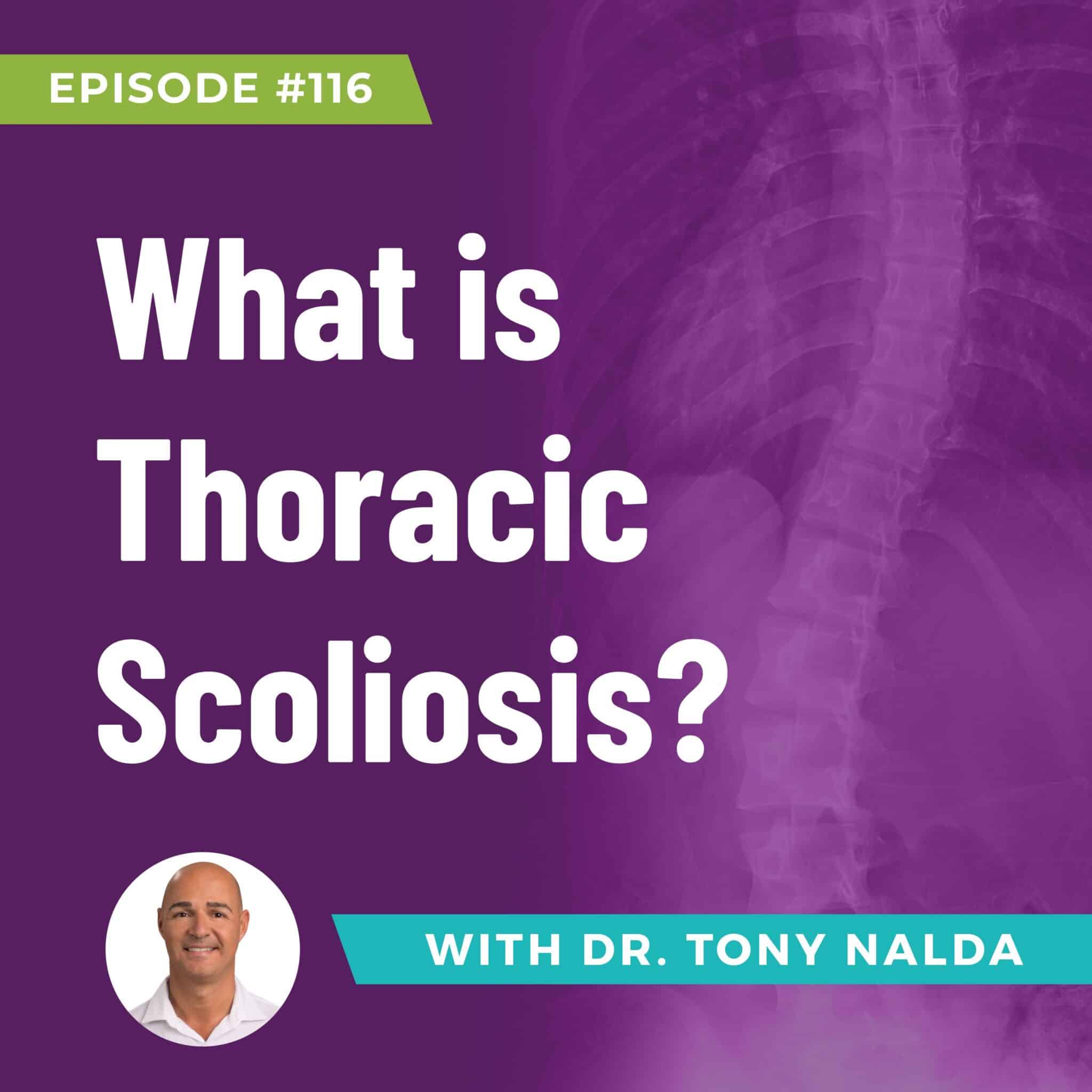Episode 116: What is Thoracic Scoliosis?
When a patient is diagnosed with scoliosis, it's often classified as thoracic scoliosis. To understand this condition, we first need to grasp what scoliosis is. Scoliosis is an abnormal curvature of the spine measuring 10 degrees or greater, known as the Cobb angle, accompanied by rotation of the vertebrae in the affected area.
Classifying Scoliosis for Effective Treatment
Scoliosis is classified by various factors to streamline the treatment process. By identifying whether a patient has thoracic, lumbar, or thoracolumbar scoliosis, healthcare providers can tailor treatment plans, predict outcomes, and address potential complications.
Age Classification
- Infantile - Under 2 years old
- Juvenile - Between 2 and 10 years old
- Adolescent - Between 10 and 18 years old
- Adult - 18 years and older
Type of Scoliosis
- Idiopathic - Unknown cause, most common type
- Congenital - Present at birth due to bone formation issues
- Neuromuscular - Associated with nerve or muscle conditions
- Degenerative - Seen in adults due to spinal degeneration
Severity and Location of the Curve
- Mild - 10-25 degrees
- Moderate - 25-45 degrees
- Severe - Over 45 degrees
Thoracic scoliosis specifically refers to a curve whose apex is in the thoracic spine, typically between T1 and T10/T11 vertebrae. This region is the most common for scoliosis diagnosis due to the visible rib deformity it causes.
Symptoms and Diagnosis
The most common symptom of thoracic scoliosis is changes in the rib cage. These changes are usually detected through the Adams Forward Bending Test. When a patient bends forward, the asymmetry in the rib cage becomes apparent. This rib deformity often leads to further testing and a definitive diagnosis via X-ray.
In adults, pain is a prevalent symptom due to spinal compression over time. This contrasts with children, who usually do not experience pain but show postural changes instead.
Treatment and Management
Acting proactively is key to managing thoracic scoliosis. The primary goal is to reduce the curve to prevent progression and improve the patient’s quality of life. Various treatment options are available, including alternative treatments and corrective measures, which are essential for maintaining and enhancing spine health.
Understanding thoracic scoliosis is vital for effective treatment and management. By classifying scoliosis based on age, type, severity, and location, healthcare providers can offer tailored and hopeful treatment plans. Proactive management can reduce the impact of scoliosis and improve the patient’s life quality.
For more in-depth discussions on scoliosis and its treatment, tune in to Dr. Tony Nalda’s podcast.
Artlist.io 847544
Podcast: Play in new window | Download
Subscribe: RSS
Dr. Tony Nalda
DOCTOR OF CHIROPRACTIC
After receiving an undergraduate degree in psychology and his Doctorate of Chiropractic from Life University, Dr. Nalda settled in Celebration, Florida and proceeded to build one of Central Florida’s most successful chiropractic clinics.
His experience with patients suffering from scoliosis, and the confusion and frustration they faced, led him to seek a specialty in scoliosis care. In 2006 he completed his Intensive Care Certification from CLEAR Institute, a leading scoliosis educational and certification center.
About Dr. Tony Nalda
 Ready to explore scoliosis treatment? Contact Us Now
Ready to explore scoliosis treatment? Contact Us Now








